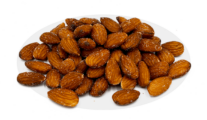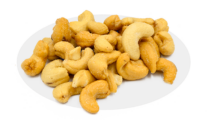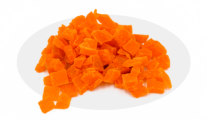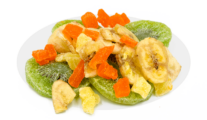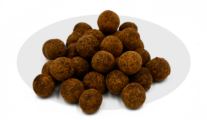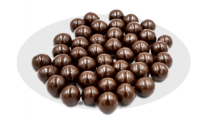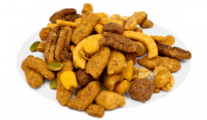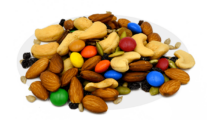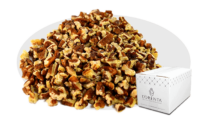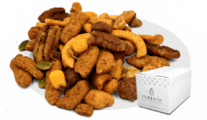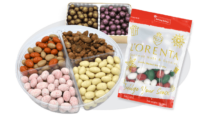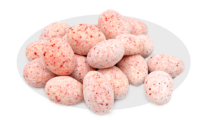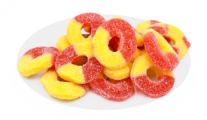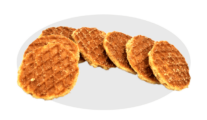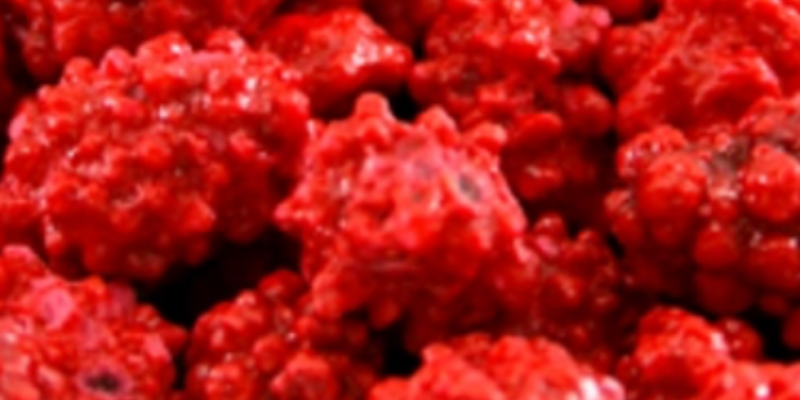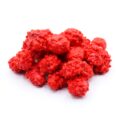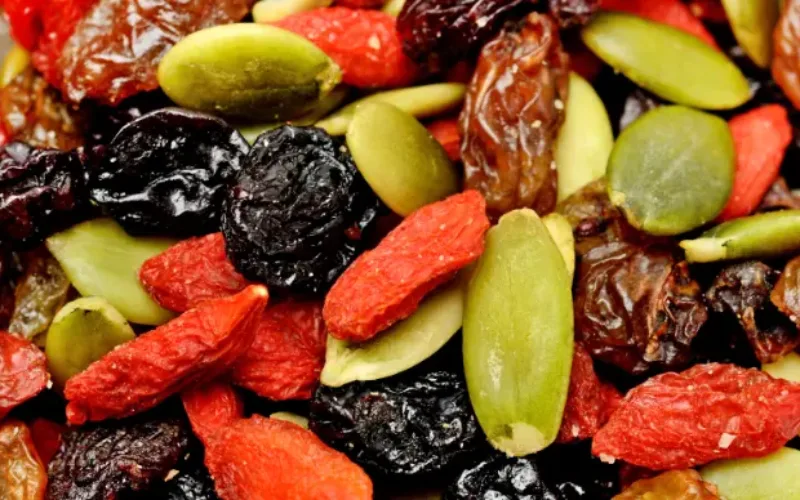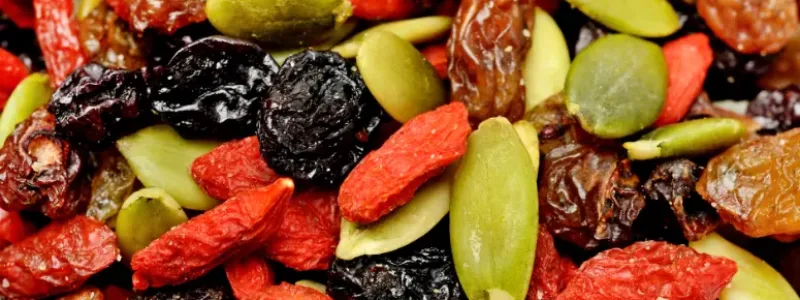Written By Sam Henselijn
French burnt peanuts explained. They are the type of classic confection our grandparents used to love. And rightfully so, because they are absolutely delicious! These red spiky peanuts have an extremely crunchy candy shell and the perfect sweet, to salty, to nuttiness balance. It’s one of our bestsellers for a reason… Fans of the old fashioned peanuts will love to read about how they’re made, where they originated, and more fun facts about them.
What are French burnt peanuts?
French burnt peanuts are delicious roasted peanuts in a sweet and crunchy candy shell. The color is also very distinctive – They’re usually bright red!
How are French burnt peanuts made?
French burnt peanuts are made from peanuts, corn syrup, sugar, confectioner’s glaze, and red dye for color. The nuts are coated in the syrup mixture and left to dry to form a crackly, crunchy exterior.
Why are French burnt peanuts bumpy?
The bumpy texture adds another layer of crunch and makes it so
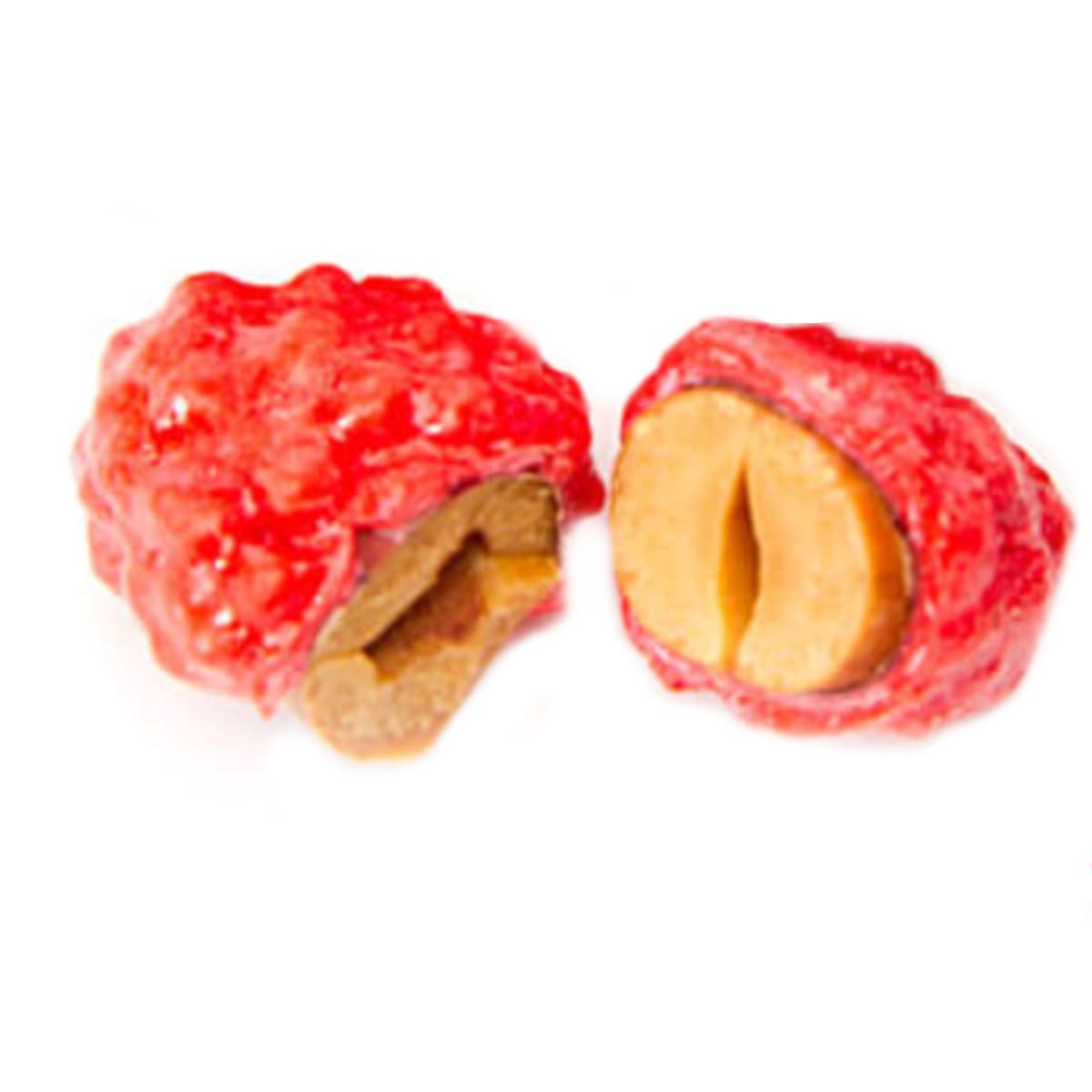
much fun to eat! French burnt peanuts are purposefully created with spikes and a rustic coating for that effect.
What is the origin of French burnt peanuts?
No one seems to know it for sure. The origin of the French Burnt Peanut is definitely spotty. One of the possibilities is that it might have been an American adaptation of the German burnt almonds, named French for a more refined branding.
French Burnt Peanuts Explained
Are French burnt peanuts the same as Boston baked beans?
Both are candy coated Spanish peanuts in varying shades of red.
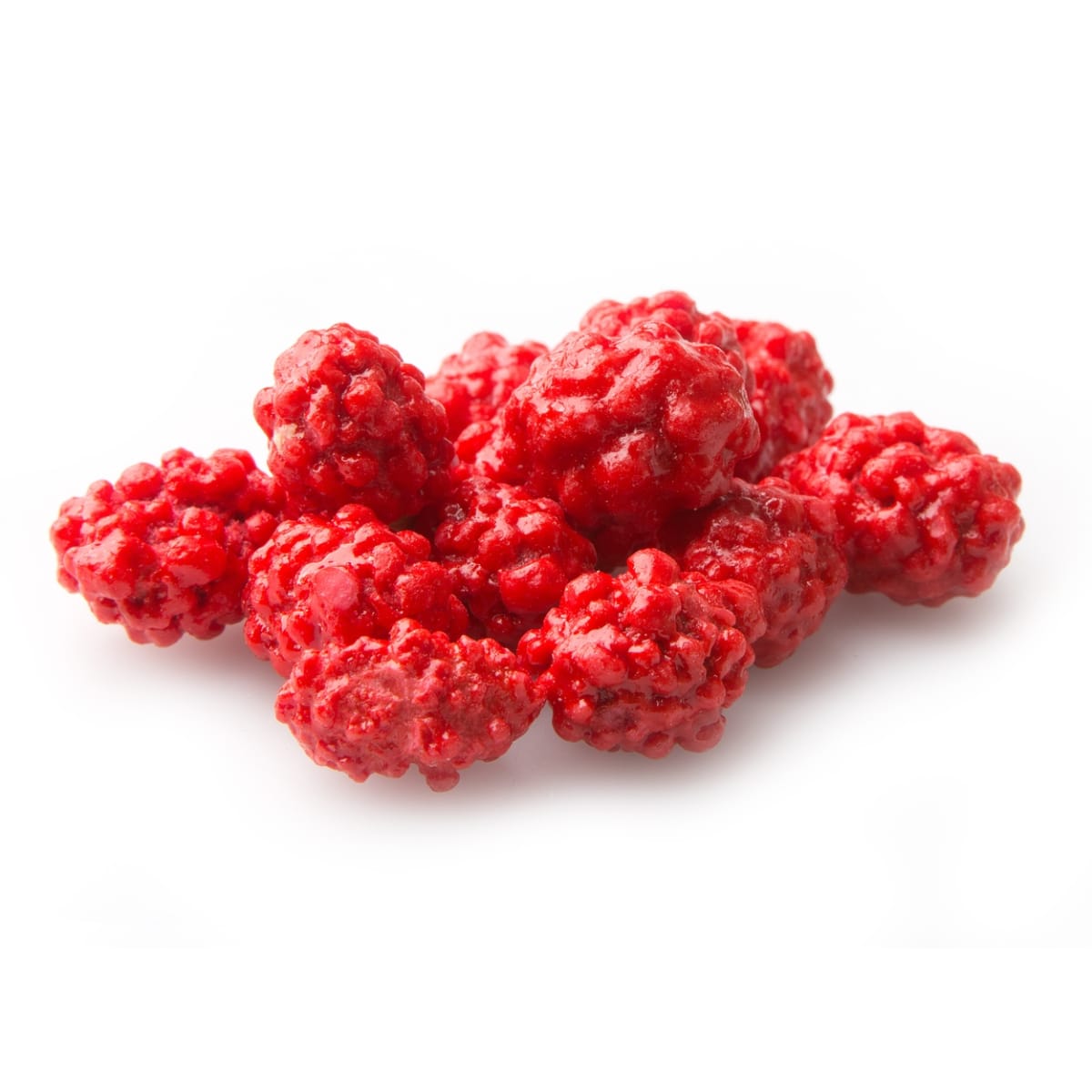
But while they may be related, they’re not the same thing. French burnt peanuts have spikes and a bumpy, rustic coating, while Boston baked beans have a smooth and shiny outer coating.
Fun facts about French burnt peanuts
- French burnt peanuts are not, in fact, French. The recipe is similar to a French brittle, thus “French.”
- They are not burnt! While no one knows exactly why they got this denomination, French burnt peanuts are sweet and delicious!
- Most of the time, the FBP is made from Spanish Peanuts. These were originally developed in Spain in the late 1700s. They are the smallest of the four major varieties of peanuts grown commercially worldwide. Spanish peanuts have a characteristic red skin, higher oil content, and a slightly sweeter flavor.
- The French Burnt Peanuts are made noticeably lumpy on purpose – it’s something of a trademark!
Are peanuts healthy for you?
America’s favorite nut is a staple in many kitchens. Wondering if peanuts are even healthy? Short answer: They are.
5 Health Benefits of Peanuts
They’re loaded with antioxidants
Peanuts contain a variety of antioxidants, including phenolic
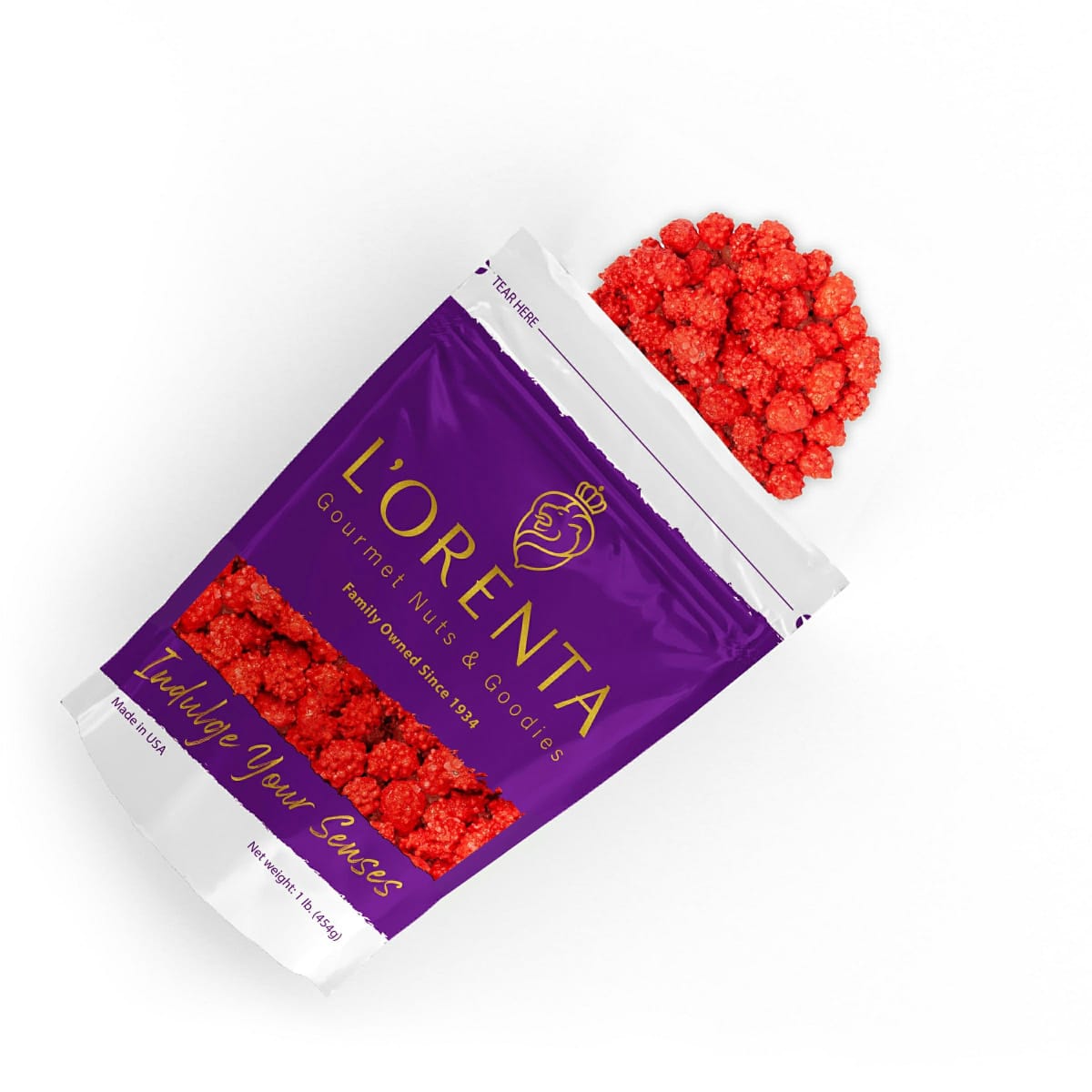
acids and flavonoids, also commonly found in types of green teas, apples, red wine and soybeans. Fun fact: the skins are actually higher in antioxidants than the whole peanut.
High protein
With 9.5 grams of protein per 1/4 cup, peanuts are ahead of all other nuts in terms of protein content. Protein is essential for life – getting the right amount of protein in your diet improves your bone health, promotes growth and muscle mass, and even helps with cell repair.
Fiber Rich
Peanuts also contain a good amount of fiber. Fiber helps to lower blood pressure and inflammation in they body. Consuming enough of it on a daily basis will help you develop a stronger immune system. Furthermore, fiber regulates the body’s use of sugars, which helps to keep hunger and blood sugar in check.
They’re heart healthy
Peanuts have lots of monounsaturated fats, which is highly regarded as one of the best fats for heart health. Adding more monounsaturated fats to your diet will help your body to boost its artery-clearing process, which lowers the risk of suffering a stroke.
Peanuts help balance blood sugar
Peanuts have been scientifically proven to help reduce the risk of diabetes and improve the outcome for people who already have it. A recent study found that consuming natural peanut butter specifically can help prevent the development of type 2 diabetes.
Why do they call them French Burnt Peanuts?
The term “French Burnt Peanuts” is likely a misnomer. There is no historical connection to France in the candy’s origin or preparation; the name may have been chosen for marketing appeal.
What is the coating on burnt peanuts?
The coating on burnt peanuts is typically made of sugar, creating a sweet and crunchy shell. The “burnt” appearance comes from the caramelization of the sugar during the cooking process.
What do French Burnt Peanuts taste like?
French Burnt Peanuts have a distinctive flavor that combines sweetness, nuttiness, and a subtle smokiness. The peanuts are coated with a crunchy, candy-like shell, often made with sugar, starch, and various flavorings. The outer layer can have a slightly caramelized or toasted taste, contributing to the overall sweet and savory profile. The texture is crunchy, and the coating may have a hint of spiciness or additional flavors, depending on the specific brand or recipe. Overall, they offer a unique blend of sweetness and nuttiness with a satisfying crunch.
Sam Henselijn Author’s Biography – Meet L’Orenta Nuts CEO
Copyright 2024 L’Orenta Nuts
L’Orenta Nuts proudly holds the SQF food safety certification, symbolizing our unwavering dedication to upholding the highest standards of food safety and quality. This certification guarantees that our products undergo rigorous scrutiny, ensuring transparency, traceability, and adherence to global food safety regulations for the utmost consumer confidence.
L’Orenta Nuts has the HACCP (Hazard Analysis and Critical Control Points) certification is a systematic approach to identifying, evaluating, and controlling food safety hazards. It ensures that food products are produced and handled in a manner that minimizes risks and complies with safety standards.
Our GMP (Good Manufacturing Practices) certification ensures that a manufacturing facility adheres to comprehensive quality and safety standards while producing pharmaceuticals, food, and other consumer goods, promoting consistency, quality, and compliance with regulatory requirements.
L’Orenta is an FDA-approved manufacturing facility and has met the rigorous standards set by the U.S. Food and Drug Administration. It demonstrates compliance with regulations, ensuring the production of safe and high-quality food products.


